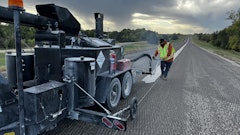This type of scenario plays out far too often on construction projects of all sizes and types. Even good people with outstanding records can get “stuck” in conflict. I recall being at an awards ceremony and a contractor was praising an owner’s project manager as the best person he had ever worked with. The very next day I got a call from a different contractor telling me about an owner’s representative on his new project and how he was the worst person he had ever worked with in his career. Then, I found out it was the same person!
Conflict is not only frustrating, demanding, and unfulfilling – it is downright expensive. A study done at Michigan State University in 2012 found that the average jobsite conflict took 161 hours (~20 days) to manage. The wages of the workers involved cost an average of $10,948.00! This is only for the labor costs due to the lost time and does not include the impacts that the conflict had on the cost of the project. This study was the first of its kind to assign a monetary value to the conflicts that occurred on actual jobsites. So what can you do to help deal effectively with jobsite conflicts?
Tip 1 Don’t Become Engaged. You can help the resolution process by not becoming engaged in the battle. How? Try to remain as if you were an interested onlooker. Don’t let your coworker’s words or behavior make you favor one side over the other.
Here’s why…When people are upset about something, they can become engaged in the battle. At that point, they lose perspective. They stop trying to find a resolution and begin to focus on finding a way to win. If you become engaged, you become part of the problem – not part of the solution.
Tip 2 Set Ground Rules for Talking. You’ve probably seen people engaged in a conflict. Everyone tends to talk at once. Each person is shooting verbal arrows at the other and very little listening happens. So, set some ground rules for talking (and listening). The best rule is that one person talks at a time while the other person must listen. Reassure everyone that they will have a turn to talk and ask questions.
Tip 3 Remember, It’s Always Personal. People are seldom upset about what they say they are. It’s usually all about hurt feelings or bruised egos. You can help people resolve their conflict by recognizing this and getting them to express their underlying feelings. A simple apology can do wonders.
Tip 4 Agree on the Problem. It sounds simple, but it’s powerful to identify the actual problem that is causing the friction. During a dispute, people tend to talk at each other. They don’t really talk to understand. You will be able to agree on the problem when you’ve really talked and listened to how each side views the issues. When you can agree on the problem and write it down, it is very likely that you will also be able to find a resolution.
Tip 5 Break It into Bite Sized Pieces. How do you eat an elephant? One bite at a time! The same is true for conflicts. When you feel overwhelmed by the problem (or the emotion involved), try breaking the problem into bite sized pieces. It’s okay to start with the part of the conflict that is easiest to resolve. Get that part resolved and you will have a history of being able to resolve conflicts together. Then take the next bite…and so on.
Tip 6 Brainstorm Ideas for Resolution. It’s said that two heads are better than one. This can really be the case when you work to find a way to resolve a conflict or dispute. Have everyone brainstorm their best ideas for resolving the problem. Make sure everyone has given you at least a couple of ideas.
Tip 7 Select the Best Solution. After brainstorming, you will begin to see patterns. (Just look for the ideas that get repeated.) Discuss these ideas and explore their feasibility. Maybe there is a way to execute one person’s idea and still give the other side what it needs. The main thing is to stay focused on resolution – not winning.
Tip 8 Agree on a “Fair” Degree of Responsibility. “This is really gonna cost you…” or “I have really been damaged!” Don’t begin your argument with costs or the threat of a penalty. Such statements usually exacerbate the conflict and the dispute grows more heated. Wait to discuss money or penalties until way after you have agreed on the problem, brainstormed potential solutions, and can see that you are coming to an agreement. Only then should you begin to discuss what would be a fair distribution of responsibility (who will pay what and when).
Tip 9 Put Agreements In Writing. Write down whatever is agreed to…and make sure everyone gets a chance to hear or read it. Don’t expect that everyone will remember it all. You must write it down and read it back to everyone to confirm agreement. You might even have everyone sign the piece of paper.
Tip 10 Discuss Next Steps. Once there is agreement in the broad sense, you must also make sure that people walk away knowing who is going to do what and when. This level of detail is critical to managing expectations and to assure that people follow through. Try to integrate these ten tips into your personal approach when managing on-site job disputes. With practice, you will be considered a trusted leader with the wisdom to help others find the path to peace.











![Lee Boy Facility 2025 17 Use[16]](https://img.forconstructionpros.com/mindful/acbm/workspaces/default/uploads/2025/09/leeboy-facility-2025-17-use16.AbONDzEzbV.jpg?ar=16%3A9&auto=format%2Ccompress&fit=crop&h=135&q=70&w=240)








